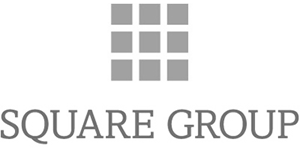Ghent Museum of Contemporary Art was founded in 1975

The Museum of Fine Art had for some time appeared to have completely lost touch with developments in art. The old art history model needed to adopt a more flexible form with which to approach current developments. Major works were still being purchased by the Museum of Fine Art, but because there was no watchful interest in modern art, several fine opportunities were missed. Geirlandt’s objective was no different from that of Fernand Scribe when he founded ‘Les Amis du Musée’ in 1897. His intention, and that of the other friends, was to raise the Museum of Fine Art to a higher level, in line with the international art scene.

With an eye to the future, the ‘Society’ also purchased works. This initiative is still continuing today and the collection now comprises several hundred works. The financial resources come from the members and the sale of print folios. Since its foundation, the ‘Society’ has enthusiastically organised numerous debates and talks to keep the public informed of recent trends, attitudes and opinions. Its artistic excursions expand horizons and concise publications enable ongoing reflection.
The Museum of Contemporary Art in Ghent was established in 1975. It was then the first Belgian museum devoted to contemporary art. It was housed in the Museum of Fine Art.
Jan Hoet was appointed director of this new Museum of Contemporary Art, also in 1975. Under his leadership, the collection grew consistently and the museum gained an international reputation. Since the museum existed for more than twenty years in provisional accommodation, the collection was only shown in fragmentary and constantly changing displays in temporary exhibitions. Major acquisitions made during its last five years were in fact never put on display at all. It was to be another 20 years before Jan Hoet and the contemporary art collection were given their own independent museum.
Emergence of 'The Red Gate' in 1996 and S.M.A.K. in 1999

Things started to move in 1996 when the ‘Red Gate’ opened. The ‘Red Gate’ was the museum’s opening exhibition in its new, but again temporary accommodation. The Museum of Contemporary Art found itself in the depot of the future museum, which was a converted wing of the former annual fair complex. The opening of the actual museum, in the converted ‘casino’, was scheduled for the end of 1998. The building as a whole was shown to the public on 9 November 1996 in a large-scale project in which all the rooms were used for all the various media involved in visual art.
In 1999 the museum was given its own building opposite the Museum of Fine Art and was given a new name: S.M.A.K. (Stedelijk Museum voor Actuele Kunst). The two museums now function as a museum island in a park alongside Ghent’s ring-road.
Philippe Van Cauteren succeeds Jan Hoet

In 2005, artistic director Jan Hoet was succeeded by Philippe Van Cauteren (1969, Belgium). Under his leadership, the exhibition programme focused mainly on important monographic exhibitions by leading artists. His particular interest in art in public space manifested itself in the international exhibition TRACK (2012), which he organised together with Mirjam Varadinis (curator at Kunsthaus, Zürich) in Ghent. At the 55th edition of the Biennale di Venezia / Pavilion of Belgium, he co-curated the exhibition Kreupelhout-Cripplewood with works by Berlinde De Bruyckere.
In 2015, Philippe Van Cauteren was appointed by the RUYA Foundation to curate the Pavilion of Iraq at the 56th edition of the Venice Biennale. The exhibition Invisible Beauty was also shown at S.M.AK. (2016) and in Erbil, Iraq (2017).
At the invitation of the Siddharta Arts Foundation, he created the exhibition My City, My Studio / My City, My Life for the Kathmandu Art Triennial 2017. There, he showed works by more than 50 artists from around 25 countries and with Belgian-born Francis Alÿs as 'patron artist'.
Philippe Van Cauteren previously worked as an independent curator and art critic, organising exhibitions in Chile, Brazil, Mexico and Germany. He writes and lectures on contemporary art on a regular basis.














